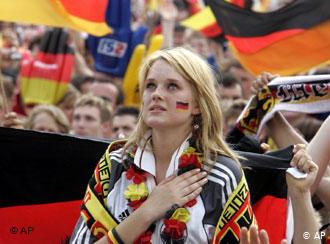The text of the song was written in 1841 by the German poet August Heinrich Hoffmann von Fallersleben (1798-1844). At that time Germany was still split up in more than 30 small states which were loosly united since 1815 in the “Deutscher Bund” (German Federation). Hoffmann von Fallersleben who was a poet, linguist and historian of literature wrote also a number of other well-known songs.
In 1922 the first President of the German Republic, the Social Democrat Friedrich Ebert, officially introduced the Deutschland-Lied as the National Anthem. In May 1952 the third stanza of the Deutschland-Lied was proclaimed the official anthem of the Federal Republic of Germany by Federal President Theodor Heuss. The melody of the Deutschland-Lied was composed by Joseph Haydn (1732-1809), the famous composer of many symphonies, operas and oratories. The melody is that of the old Austrian Kaiserhymn (Imperial Anthem) which was played for the first time on February 12, 1797.
The German text and the English translation follow below:
Einigkeit und Recht und Freiheit
Fuer das deutsche Vaterland –
Danach lasst uns alle streben,
Bruederlich mit Herz und Hand.
Einigkeit und Recht und Freiheit
Sind des Glueckes Unterpfand –
Blueh’ im Glanze dieses Glueckes,
Bluehe, deutsches Vaterland.
Unity and right and freedom
For the German Fatherland,
For this let us all fraternally
Strive each with heart and hand.
Unity and right and freedom
Are the pledge of happiness.
Bloom in the splendor of this happiness,
Germany, our Fatherland.
O Canada
O Canada!
Our home and native land!
True patriot love in all thy sons command.
With glowing hearts we see thee rise,
The True North strong and free!
From far and wide,
O Canada, we stand on guard for thee.
God keep our land glorious and free!
O Canada, we stand on guard for thee.
O Canada, we stand on guard for thee.

Recent Comments